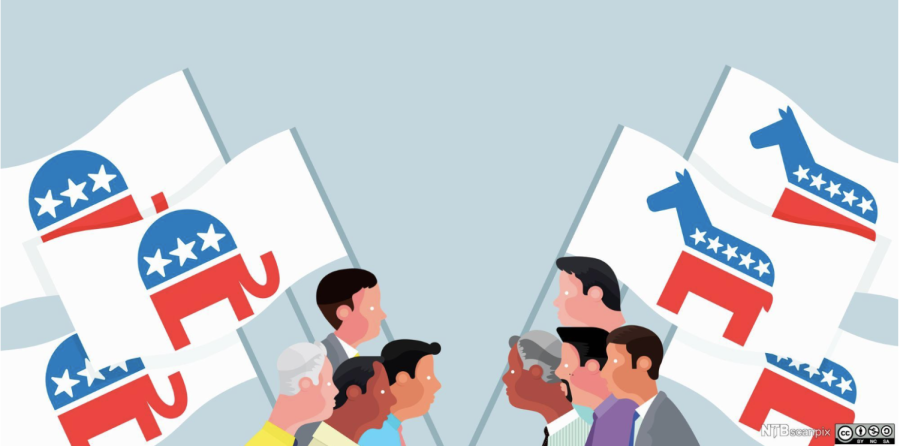Hyperpartisanship Part 1: What Is Hyperpartisanship and Why Does It exist?
January 19, 2023
Hyperpartisanship is when society is divided by political parties. Today, hyperpartisanship is worse than ever, making it difficult to problem-solve in government. In the United States, hyper-partisanship is driven by inequalities and exacerbated through various forms of media which will lead to everlasting conflict if not stopped.
The beginnings of hyperpartisanship stem from the pre-existing divide between different genders, races, and religions in the United States; however, this divide has widened due to inequalities that have grown tremendously. Americans are very outspoken due to the fact that this idea is rooted in the US government. Tracing all the way back to the foundation of this country, every document, and event that has made the US the way it is today has come from people speaking out about their rights. The Declaration of Independence, the Bill of Rights, and the civil rights movement are all examples of people speaking out against the government to support their needs and prevent the government from creating inequalities. Citizens spoke out against the tyrannical government of Britain because they believed that Britain broke the Social Contract, which led to the Declaration of Independence. Anti-Federalists wanted to ensure that our rights were spelled out and could not be taken away by a new form of government, which led to the creation of the Bill of Rights. The civil rights movement began because of racial inequalities and led to various forms of new legislation to enable equality for all.
Although advocating is crucial for society, the more outspoken people are, the more controversies exist, which leads to hyper-partisanship. With more inequalities in current events, people are speaking out against the government now more than ever which causes this divide to be intensified; however, that was not always the case. In recent years, this divide has sorted people into tribes based on where they identify themselves. Over time, these tribes become very ideological since people with similarities tend to share common interests, and the tribes split even more. In addition, society tends to categorize people into a tribe because they believe in an issue that is associated with a certain tribe. This causes there to be many different extremes because society automatically sorts people, instead of letting them be in the middle of the spectrum. Moreover, these tribes are conflicting with other tribes which creates a sense of disunity in the US.
Additionally, as the world has modernized, the transmission of information has begun to spread at a rapid pace. With 24-hour broadcasting, online websites that are updated by the minute, and social media where posts are constantly reshared, it is nearly impossible to ensure that all of the information is correct. In addition, social media amplifies the gravity of many events because users believe that an intense story will get them a larger following. With that being said, even notable news sources have become less reliable because there are many biases that go unnoticed. Furthermore, in the past few years, conspiracists have gained a large following to the point where they convince a large population of people to believe a story without demonstrating reliable evidence to support them. Social media is becoming far more dangerous than ever imagined and people are becoming victims of this trap that social media has created. The users that are hiding behind the screens are not always average people, as they can be parts of larger organizations that are being paid to spread misinformation in hopes to sway people’s opinions. Fake news, misinformation, biases, and conspiracy theories are all different forms of extremism that emerge from the media and spread like wildfire. Many of these exaggerated events anger people who then blame other tribes, setting them even further apart. All in all, this contributes to the constant friction in politics.

















































































































































